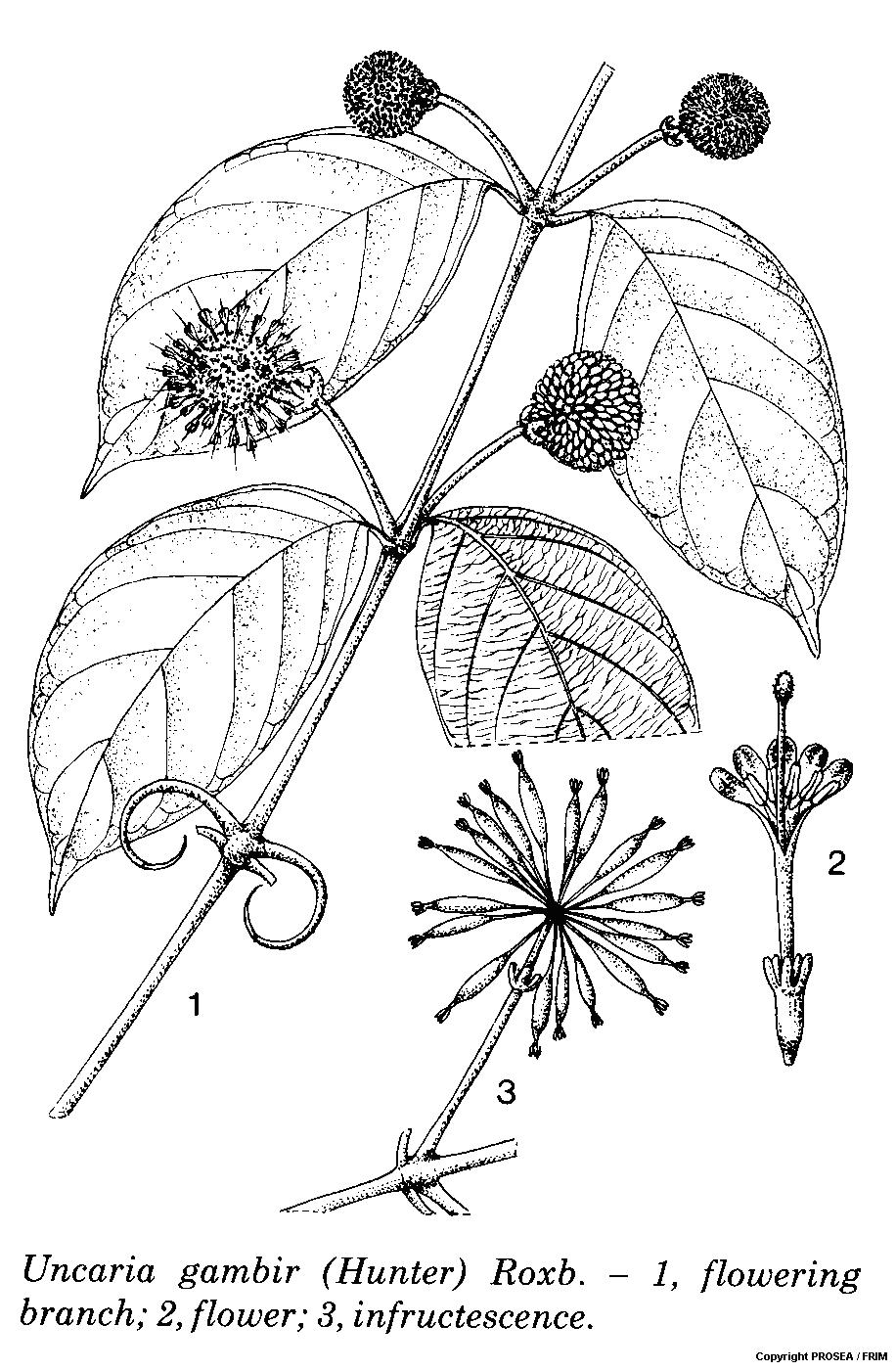Uncaria gambir (Hunter) Roxb.
Family
Rubiaceae
Synonyms
None
Vernacular Names
| Malaysia | Gambir, gambier, kancu. |
| English | Gambier, white cutch, pale catechu |
| Indonesia | Gambir (General). |
Geographical Distributions
The origin of Uncaria gambir is uncertain. Rumphius reported its cultivation in the Moluccas in the middle of the 18th Century. It is cultivated in Peninsular Malaysia and Indonesia (Sumatra, Java, Bali, Kalimantan, Moluccas). Its plants which are probably truly wild have been collected in Sumatra and Borneo.
Description
Uncaria gambir is a liana that is often cultivated as a straggling shrub, with square young stems and erect main stems which bear horizontal branches with recurved hooks (modified peduncles of inflorescences).
The leaves are arranged opposite, subcoriaceous, and entire, ovate to (broadly) elliptic, measuring (6-)9-12(-15) cm x (3.5-)5-7(-8) cm, rounded to subcordate at the base, acute at the apex, hairless, with 5-6 pairs of lateral nerves that are raised below and with hairy domatia.
The flowers are in heads on the horizontal plagiotropic branches. The heads are (3.5-)4-5 cm in diametre (across petals), with densely hairy receptacle and without interfloral bracteoles. The pedicel is up to 3 mm long, with hypanthium measuring 1—2 mm in diametre and densely yellow-brown hairy. The sepal is 3-4.5 mm long, with 5 trigonal lobes 1-2 mm long , finely pubescent and persistent. The petal is salver-shaped with tube 8-10(-12) mm long , with sparsely to densely pubescent exterior, and with 5 oblong lobes 2-3 mm long while the exterior is densely yellow-brown sericeous and quickly falls off from the heads. The 5stamens are adnate to the petal. The ovary is inferior, with exserted style 5-7 mm long, with obovoid to clavate stigma and measuring about 2 mm.
The fruiting head is (50-)60-80 mm in diametre while the fruitlets (capsules) are 14-18 mm long, which are sparsely pubescent and crowned by the sepal and many-seeded. The fruit stalks are up to 20 mm long. The silvery-grey seeds are very tiny.
Ecology / Cultivation
Uncaria gambir can be cultivated in areas with high rainfall throughout the year. Usually, it grows well at altitudes of 0-200 m, but cultivation up to 1000 m is possible. The plant does not tolerate waterlogging. Gambier has no special soil requirements, but it is usually cultivated in soils with a rich humus layer, or containing much clay. Wild Uncaria gambir is most commonly found in secondary forests. It does not occur in dry regions or at higher altitudes.
Line Drawing / Photograph
References
- Plant Resources of South-East Asia No. 3: Dye and tannin-producing plants.



